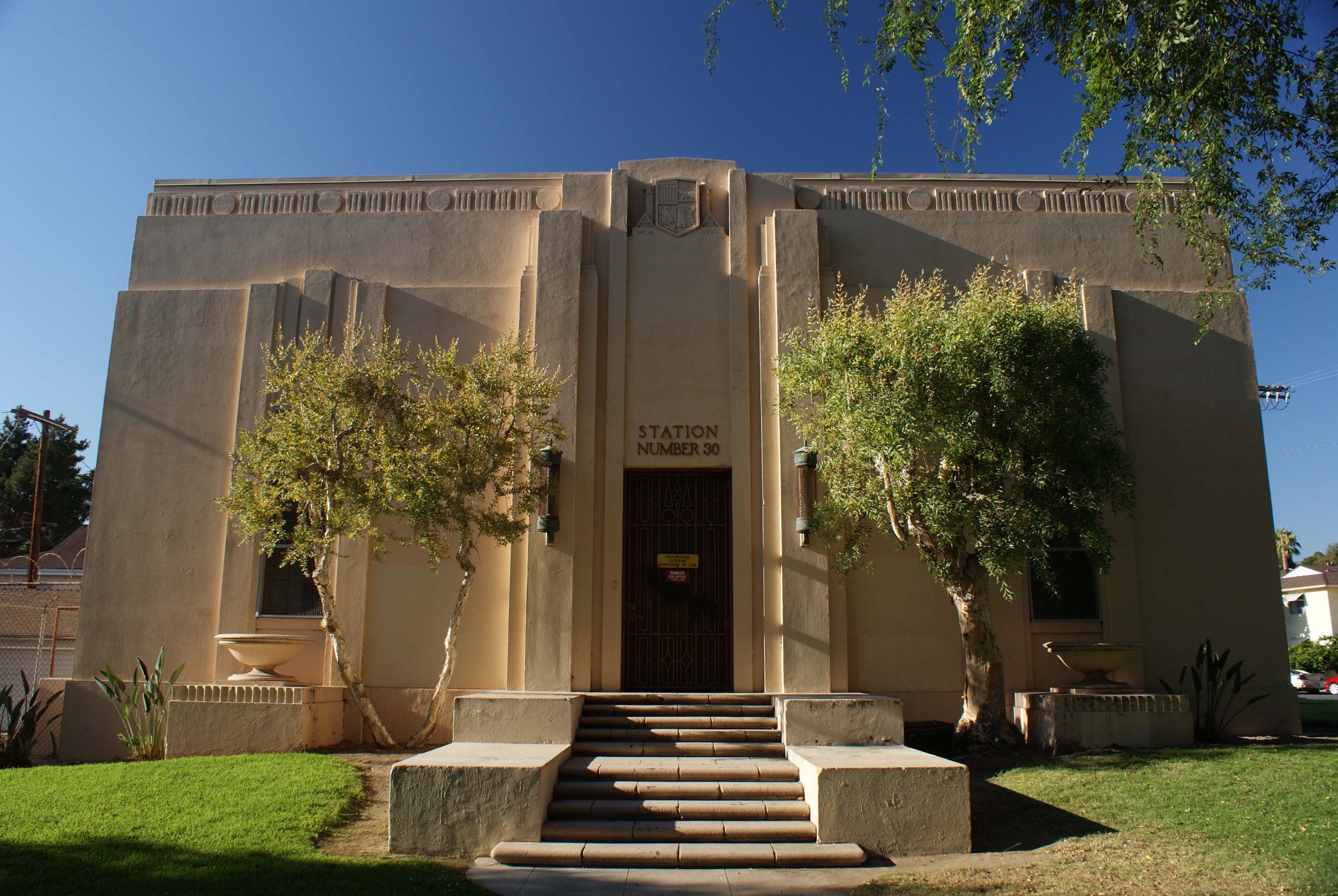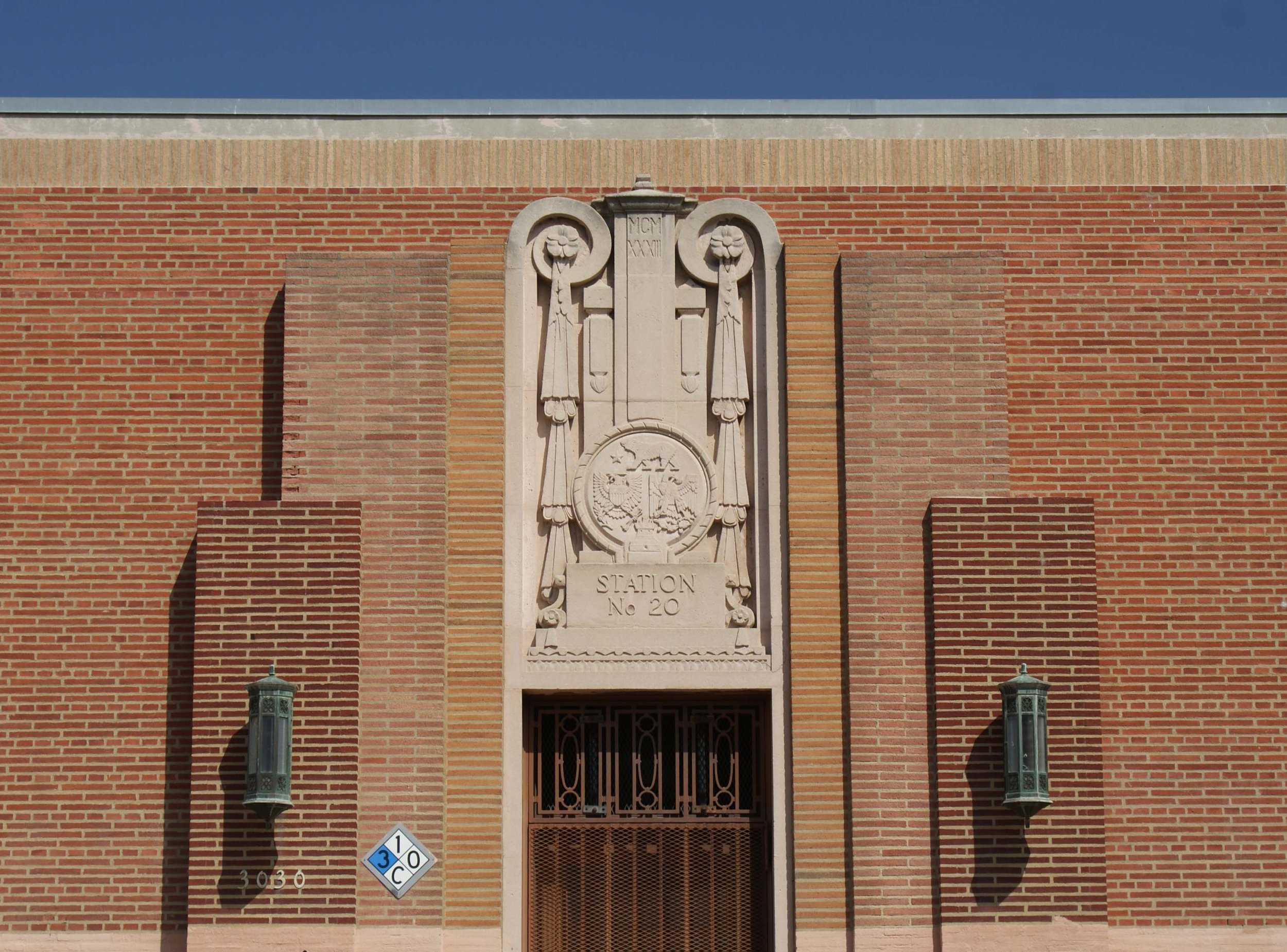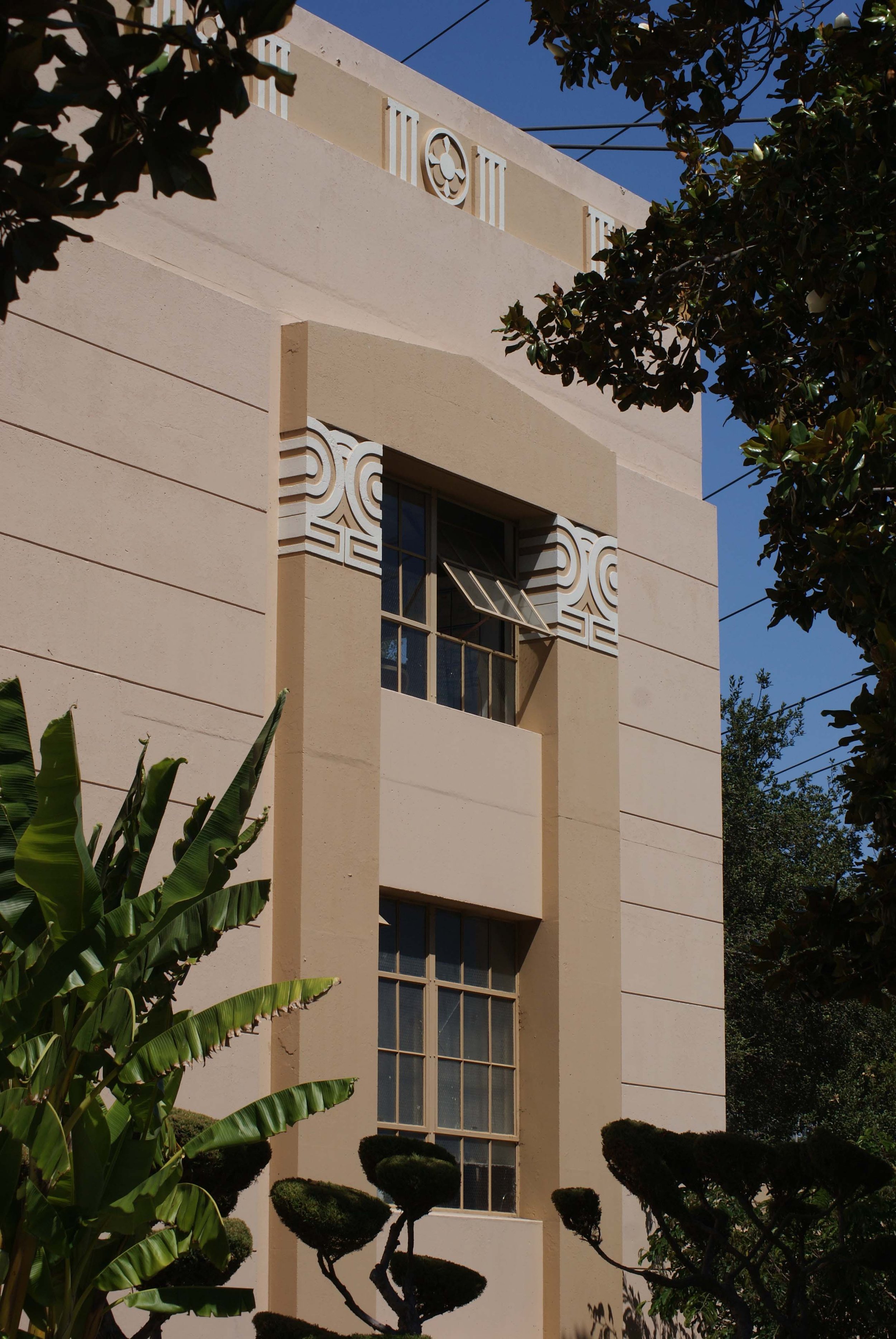Southern California and Los Angeles in particular, was heavily marketed to the east coast with promises of open land, abundant sunshine, and palm tree lined streets. It worked. In 1890 the population of Los Angeles was 50,000. By 1920 it was 575,000. Between 1920 to 1940 the population grew by over one million. At the same time, the city’s boundaries grew to the north and west to provide land for its burgeoning population. The city’s fledgling Municipal Light, Water and Power Company (the forerunner of the DWP) strove to meet the challenges of providing power to the booming city. The Los Angeles aqueduct not only brought water but also with it hydroelectric power. Electric Distribution Stations (the last in a chain of facilities bringing power to homes) were built throughout the new suburbs, often in advance of the development, and a modern municipal electrical system was born.
Rather than design their facilities as purely utilitarian structures, the Department saw them as something that should visually enhance their communities. Some were built in park-like settings providing recreation as well as basic power needs. The earliest of these buildings were built in the prevailing beaux arts style often resembling California mission architecture. By the late 1920s however, Art Deco buildings began to appear in Los Angeles. In the 1930s, the Department embraced this new style of architecture with its celebration of technology and modernity. The California mission architecture was reinterpreted in the new Art Deco style. Throughout the1930s and into the late 1940s a wealth of these Art Deco DWP buildings, Distribution Stations, Receiving Stations, and Customer Service Centers, were built all over the Los Angeles area. Most of these still stand today and only a few have been substantially changed. These structures have stood the test of time and remain hidden treasures often unseen while some hide in plain sight.
The lecture will include a brief introduction outlining the growth of the city and its water and power system. We will then tour a selection of Distribution and Receiving Stations throughout the city. Some designed by notable architects but most by unnamed engineers who worked for the Department. Material will include documents and drawings from the archives of the DWP not available to the general public.
This is a virtual lecture. Tickets are $6 for members and $10 for non-members.
If you purchase a ticket before the event, but are unable to attend, we will send you a link to view the program.
Jeffrey Bissiri, AIA
Jeffrey Bissiri is a Los Angeles native whose family roots in the city go back to the early 1900’s. Jeff graduated from California Polytechnic University at Pomona with a Bachelor of Architecture degree in 1982 and has been a licensed architect since 1986. His professional experience with various firms has included commercial, institutional and custom residential projects across Southern California. He began his own practice, Bissiri Studio, in 2013.
Combining his love of architecture, Los Angeles history, and all things Deco, Jeff has been a member of the ADSLA since 2006 and is a former board member. He has been an active member of the Preservation Committee, participating in the landmarking process for several ADSLA nominated buildings. Jeff helped to curate the ADSLA Hollywood Blvd walking tour and is one of its three docents. Jeff was a two-time lecturer at the Queen Mary Art Deco Festival including LA DWP Art Deco.
If you haven’t read Jeff’s What Is Art Deco, you can find it here.






